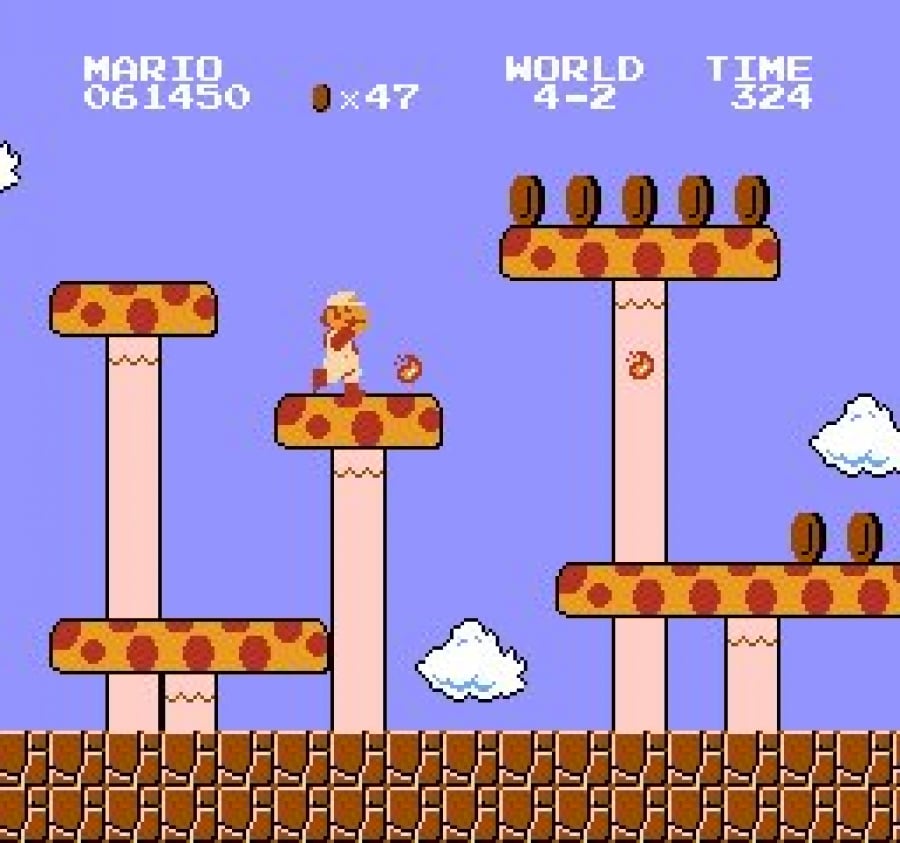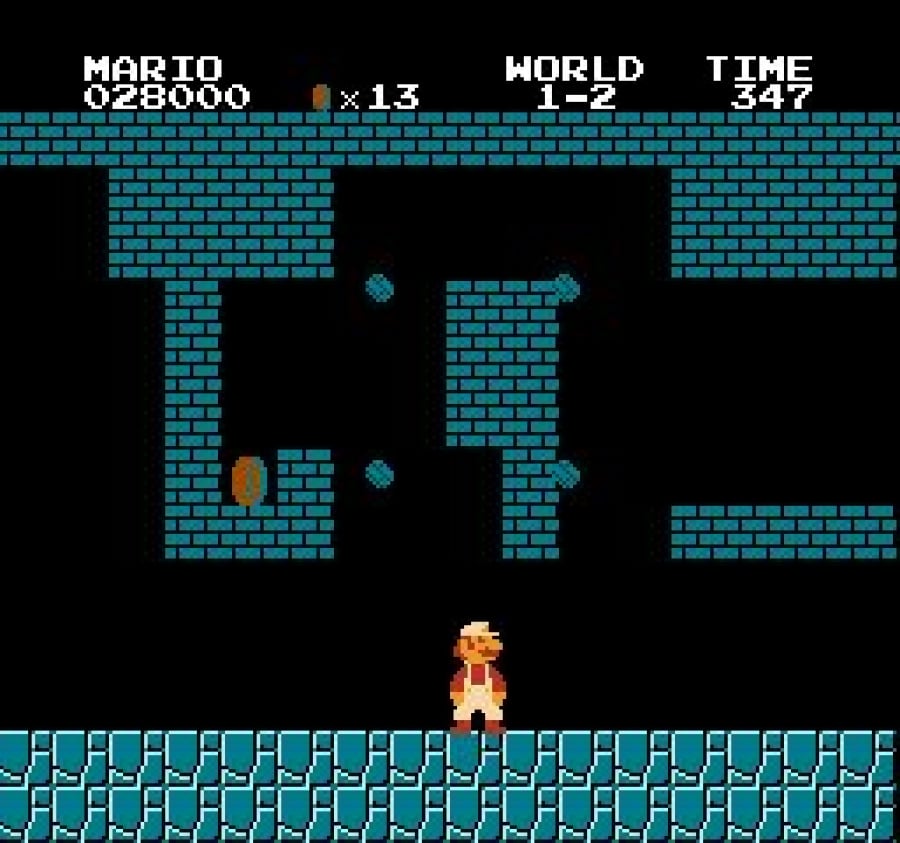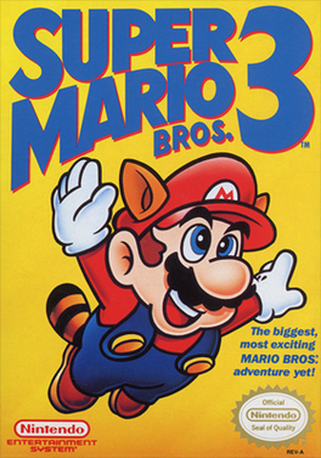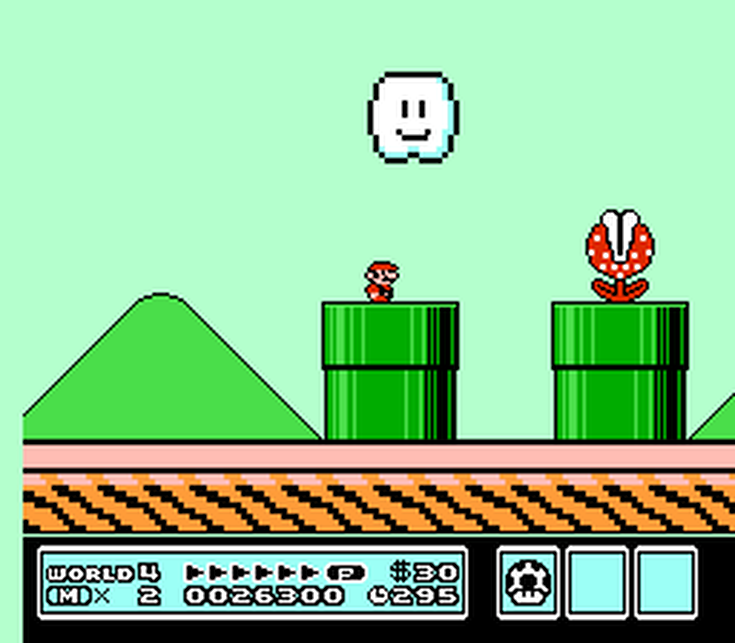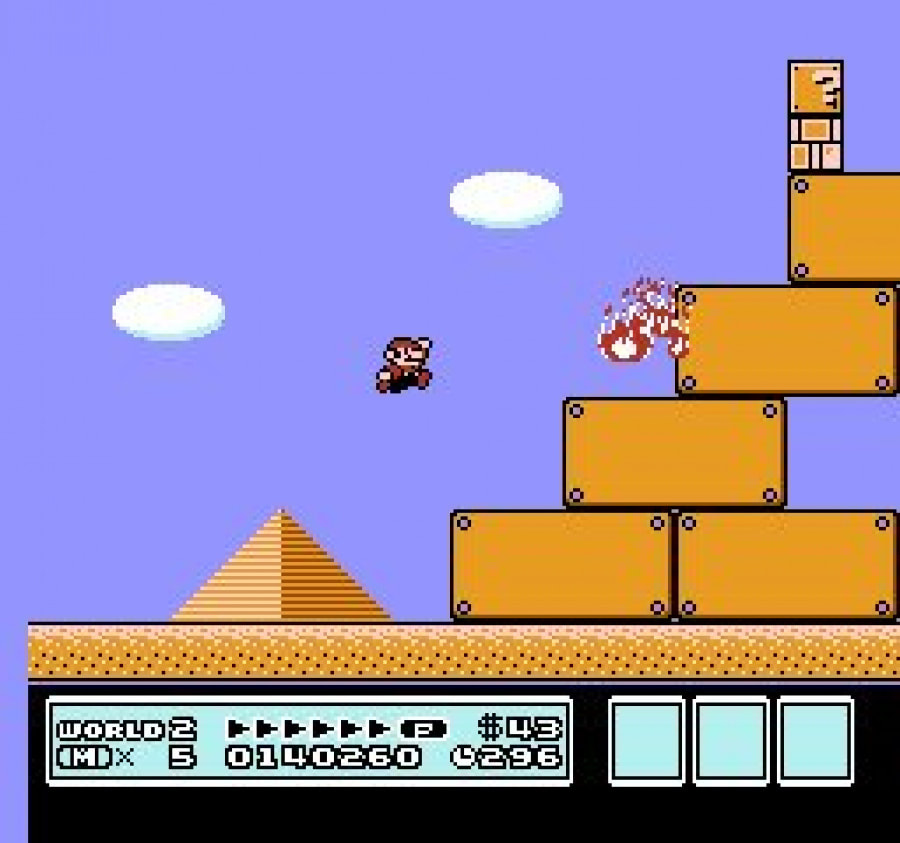Re: Games Beaten 2023
Posted: Sat Jun 10, 2023 2:03 pm
Previous Years: 2015 2016 2017 2018 2019 2020 2021 2022
1. Void Destroyer - PC
2. Ender Lilies: Quietus of the Knights - Switch
3. Raging Blasters - Switch
4. Citizen Sleeper - Switch
5. GetsuFumaDen: Undying Moon
6. Hands of Necromancy - PC
7. Project Downfall - PC
8. Chasm: The Rift - PC
9. Cultic - PC
10. Kirby Super Star - SNES
11. Kirby's Dream Land 2 - GB
12. Kirby's Dream Land 3 - SNES
13. Kirby 64: The Crystal Shards - N64
14. Fire Emblem Engage - Switch
15. Mechwarrior 5: Rise of Rasalhague - PC
16. Kirby's Epic Yarn - Wii
17. Kirby's Return to Dreamland - Wii
18. Mega Man 7 - SNES
19. Mega Man 8 - PS1
20. Conquest: Frontier Wars - PC
21. Theatrhythm Final Bar Line - Switch
22. Octopath Traveler II - Switch
23. Last Call BBS - PC
24. The Legend of Heroes: Trails to Azure - Switch
25. Dread Templar - PC
26. The Great War: Western Front - PC
27. GrimGrimoire OnceMore - PS5
28. Haegemonia: Legions of Iron - PC
29. Everspace 2 - PC
30. Star Wars Jedi: Survivor - PC
31. The Legend of Zelda: Tears of the Kingdom - Switch
32. Warhammer 40000: Boltgun - PC
33. Diablo 4 - PC
Diablo 4 brings us back to Sanctuary for another go at trying to stem the forces of Hell from conquering humanity. This time the demon Lilith, one of the two creators of Sanctuary alongside the angel Inarius, is your primary antagonist. Her goal is uncertain, but it is clear it won't be good for humanity. Your journey will take you across five areas of the northern part of the eastern continent, shifting to a more open world approach compared to previous titles.
Gameplay-wise, things sit somewhere between D2 and D3. Like D3 there is a setup of both mouse buttons and 1-4, with a button to pop healing potions. This time the potions are more like D2, where you can chug them constantly but only have a limited number. Potions drop pretty regularly from enemies, so it's a bit more like D3 health globes in that respect. Unlike D3, here you have a skill tree again. It's set up where there is a central node that will have multiple active and passive skills available, with the general intent being you take one active per central node and that will correspond with that slot on your bar. So the first node has your resource-free basic attack sills, while the second has your bread and butter resource spender. The ones after are your utility and high cooldown stuff, with an ultimate as the last skill slot and a final node where you pick one defining passive; think of this like a build specialization that encourages you to craft around it. Each active skill has passive associated with it a la D3's rune system. The first is fixed, while the second is a choice between two (except utlimate,s they just have a fixed second). There are other passives attached to those central nodes that buff you in various ways. Additionally, active skills can be ranked up to five times; some really want that power boost while others are one point wonders. Getting to the next central node requires a certain number of points to be spent overall. And while there is a "if you don't know what to do, follow it like this" setup for skills to action slots, you are free to mix and match however you like, as long as you can make it work for your playstyle.
Once you reach level 50 you stop gaining skill points and start gaining paragon points. This is a big board of nodes a la FF12's license grid, and you invest in adjacent ones as you traverse the board. Most are minor stat boosts, but there are some that are more significant and have different values for different builds. Once you reach the terminal node of a board you can attach another board to it; these additional boards have multiple terminal nodes and each has a key node that helps you really refine your build. Thus, your end game progression is working through the paragon boards to tailor your character for how you want to play it.
As mentioned, the game has an open world setup. After doing the prologue you are free to do the first three acts in any order; once you complete all three you move into act four and the quest objectives are a bit more linear (though at times you will have two objectives that can be done in any order). As you explore the world you will discover dungeons and towns (for waypoints and supplies) and encounter events (think the cursed chest stuff from D3). Exploring the world has tangible benefits; you gain exploration points which will unlock benefits not just for the current character, but also for every other character you roll. If you hit all the exploration stuff then a new character will start off with a major stats boost, 5 extra potion slots, and 10 skill points. This really makes rolling alts a lot more fun, as 10 points is enough to get you the bones of a build going from the start. New characters also can skip the campaign if you've already completed it, letting you jump into things right away.
Once you finish the campaign you drop into the post game character building stuff. This consists of a few different systems. The first is Whispers; which is a similar setup to Adventure Mode in D3. You have various areas where you go, accomplish a task, and fill a progress bar. When the bar is full you get a cache reward. The second is Nightmare Dungeons; this is D4's version of Rifts. The first time you do a dungeon in D4 you unlock a legendary essence that allows you to enchant a piece of gear with that special affix (though it will always be the lowest roll on a range, so it's still good to find a legendary in the wild), while the Nightmare variant has you up the level of monsters in the dungeon and give them extra powers in exchange for far better loot drops and the ability to level up portions of your paragon board. There's other activities in the endgame like Helltides, PVP zones, and world bosses, but what I've described are the primary ones you should expect to engage with.
From a general feel perspective, things are a bit closer to D2 than D3. The visual design evokes more of that dread that D2 had, and skill effects are a bit more toned down compared to the light shows of D3. When properly built you will explode large groups at a time, but D2 was the same. The game also has a large number of sidequests to go with the open world feeling; feel free to engage or skip depending on how you're feeling (the game has minimum levels for each act and then will scale up as needed if you level harder). You do run into other people in the world, but at just the right rate that the world feels inhabited without feeling like there's always someone around.
Overall, if you're a Diablo fan you'll enjoy Diablo 4. It doesn't necessary do anything major to the formula, but when the formula is already as good as it is that isn't necessarily a bad thing. Every class has multiple viable builds, and respeccing is that middle ground of not being free but it is attainable enough that you can experiment or shift if you get a particular piece of unique gear that makes you want to try a different setup.
1. Void Destroyer - PC
2. Ender Lilies: Quietus of the Knights - Switch
3. Raging Blasters - Switch
4. Citizen Sleeper - Switch
5. GetsuFumaDen: Undying Moon
6. Hands of Necromancy - PC
7. Project Downfall - PC
8. Chasm: The Rift - PC
9. Cultic - PC
10. Kirby Super Star - SNES
11. Kirby's Dream Land 2 - GB
12. Kirby's Dream Land 3 - SNES
13. Kirby 64: The Crystal Shards - N64
14. Fire Emblem Engage - Switch
15. Mechwarrior 5: Rise of Rasalhague - PC
16. Kirby's Epic Yarn - Wii
17. Kirby's Return to Dreamland - Wii
18. Mega Man 7 - SNES
19. Mega Man 8 - PS1
20. Conquest: Frontier Wars - PC
21. Theatrhythm Final Bar Line - Switch
22. Octopath Traveler II - Switch
23. Last Call BBS - PC
24. The Legend of Heroes: Trails to Azure - Switch
25. Dread Templar - PC
26. The Great War: Western Front - PC
27. GrimGrimoire OnceMore - PS5
28. Haegemonia: Legions of Iron - PC
29. Everspace 2 - PC
30. Star Wars Jedi: Survivor - PC
31. The Legend of Zelda: Tears of the Kingdom - Switch
32. Warhammer 40000: Boltgun - PC
33. Diablo 4 - PC
Diablo 4 brings us back to Sanctuary for another go at trying to stem the forces of Hell from conquering humanity. This time the demon Lilith, one of the two creators of Sanctuary alongside the angel Inarius, is your primary antagonist. Her goal is uncertain, but it is clear it won't be good for humanity. Your journey will take you across five areas of the northern part of the eastern continent, shifting to a more open world approach compared to previous titles.
Gameplay-wise, things sit somewhere between D2 and D3. Like D3 there is a setup of both mouse buttons and 1-4, with a button to pop healing potions. This time the potions are more like D2, where you can chug them constantly but only have a limited number. Potions drop pretty regularly from enemies, so it's a bit more like D3 health globes in that respect. Unlike D3, here you have a skill tree again. It's set up where there is a central node that will have multiple active and passive skills available, with the general intent being you take one active per central node and that will correspond with that slot on your bar. So the first node has your resource-free basic attack sills, while the second has your bread and butter resource spender. The ones after are your utility and high cooldown stuff, with an ultimate as the last skill slot and a final node where you pick one defining passive; think of this like a build specialization that encourages you to craft around it. Each active skill has passive associated with it a la D3's rune system. The first is fixed, while the second is a choice between two (except utlimate,s they just have a fixed second). There are other passives attached to those central nodes that buff you in various ways. Additionally, active skills can be ranked up to five times; some really want that power boost while others are one point wonders. Getting to the next central node requires a certain number of points to be spent overall. And while there is a "if you don't know what to do, follow it like this" setup for skills to action slots, you are free to mix and match however you like, as long as you can make it work for your playstyle.
Once you reach level 50 you stop gaining skill points and start gaining paragon points. This is a big board of nodes a la FF12's license grid, and you invest in adjacent ones as you traverse the board. Most are minor stat boosts, but there are some that are more significant and have different values for different builds. Once you reach the terminal node of a board you can attach another board to it; these additional boards have multiple terminal nodes and each has a key node that helps you really refine your build. Thus, your end game progression is working through the paragon boards to tailor your character for how you want to play it.
As mentioned, the game has an open world setup. After doing the prologue you are free to do the first three acts in any order; once you complete all three you move into act four and the quest objectives are a bit more linear (though at times you will have two objectives that can be done in any order). As you explore the world you will discover dungeons and towns (for waypoints and supplies) and encounter events (think the cursed chest stuff from D3). Exploring the world has tangible benefits; you gain exploration points which will unlock benefits not just for the current character, but also for every other character you roll. If you hit all the exploration stuff then a new character will start off with a major stats boost, 5 extra potion slots, and 10 skill points. This really makes rolling alts a lot more fun, as 10 points is enough to get you the bones of a build going from the start. New characters also can skip the campaign if you've already completed it, letting you jump into things right away.
Once you finish the campaign you drop into the post game character building stuff. This consists of a few different systems. The first is Whispers; which is a similar setup to Adventure Mode in D3. You have various areas where you go, accomplish a task, and fill a progress bar. When the bar is full you get a cache reward. The second is Nightmare Dungeons; this is D4's version of Rifts. The first time you do a dungeon in D4 you unlock a legendary essence that allows you to enchant a piece of gear with that special affix (though it will always be the lowest roll on a range, so it's still good to find a legendary in the wild), while the Nightmare variant has you up the level of monsters in the dungeon and give them extra powers in exchange for far better loot drops and the ability to level up portions of your paragon board. There's other activities in the endgame like Helltides, PVP zones, and world bosses, but what I've described are the primary ones you should expect to engage with.
From a general feel perspective, things are a bit closer to D2 than D3. The visual design evokes more of that dread that D2 had, and skill effects are a bit more toned down compared to the light shows of D3. When properly built you will explode large groups at a time, but D2 was the same. The game also has a large number of sidequests to go with the open world feeling; feel free to engage or skip depending on how you're feeling (the game has minimum levels for each act and then will scale up as needed if you level harder). You do run into other people in the world, but at just the right rate that the world feels inhabited without feeling like there's always someone around.
Overall, if you're a Diablo fan you'll enjoy Diablo 4. It doesn't necessary do anything major to the formula, but when the formula is already as good as it is that isn't necessarily a bad thing. Every class has multiple viable builds, and respeccing is that middle ground of not being free but it is attainable enough that you can experiment or shift if you get a particular piece of unique gear that makes you want to try a different setup.


